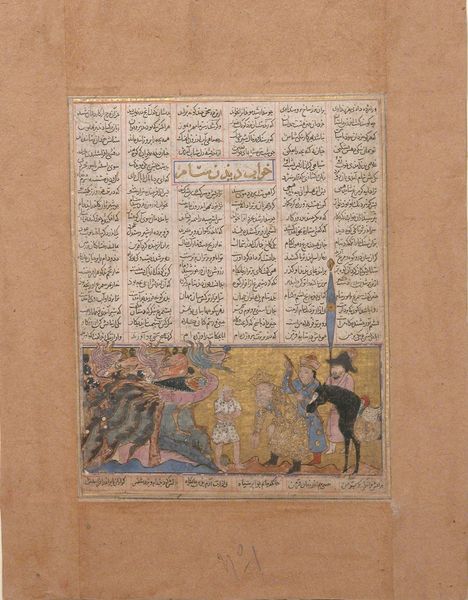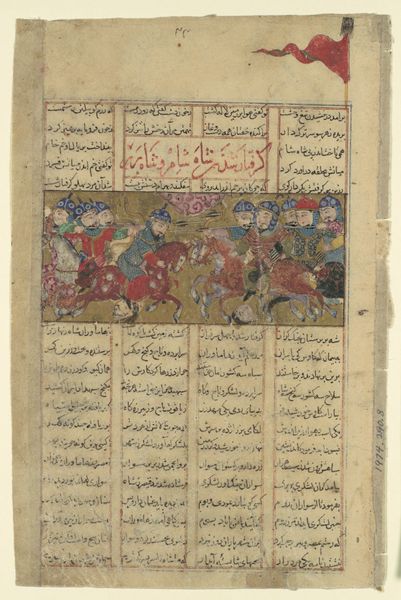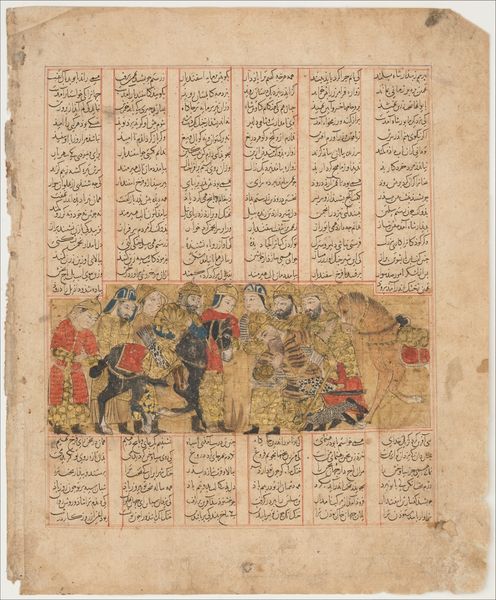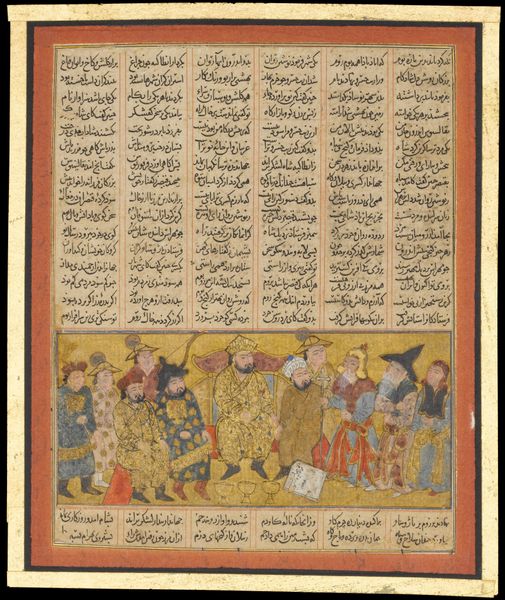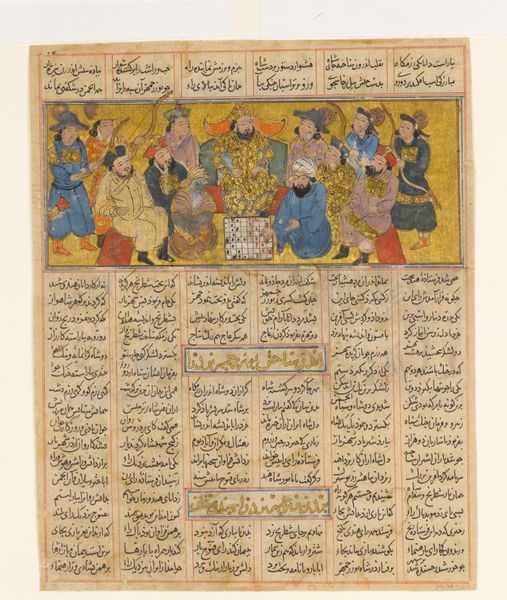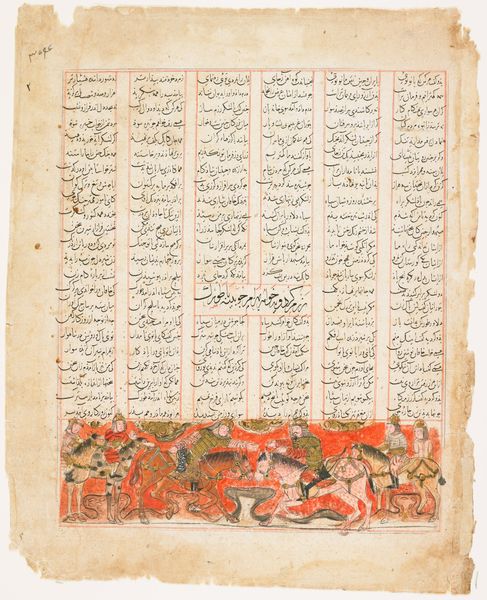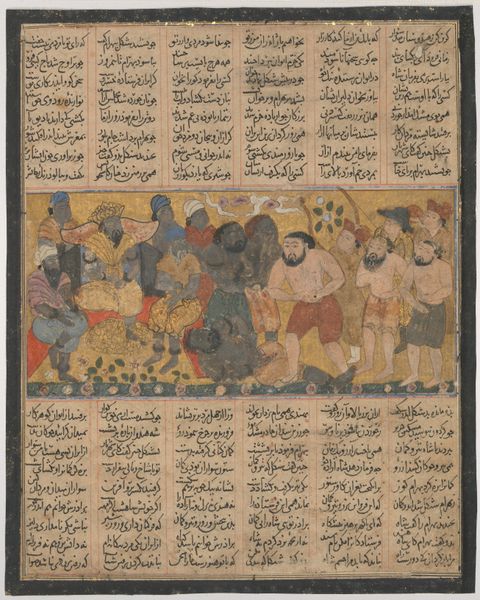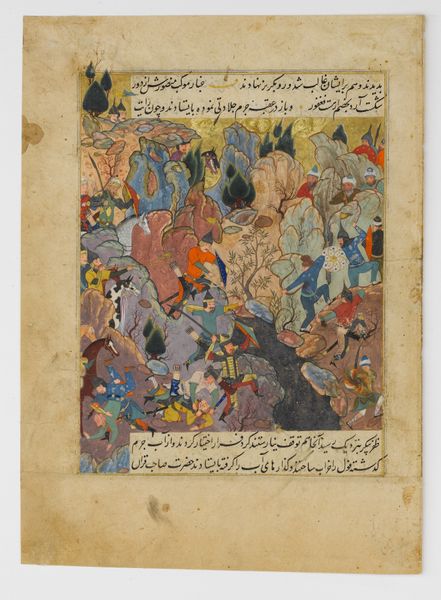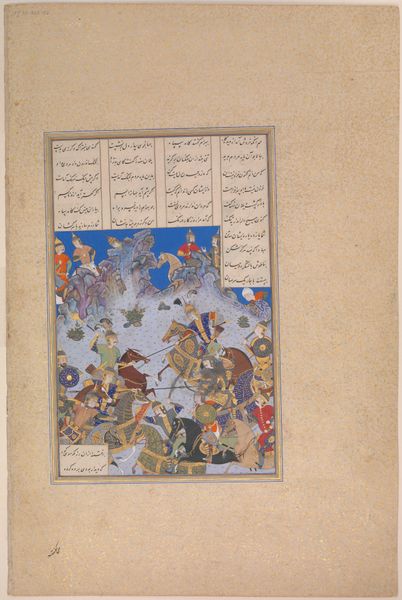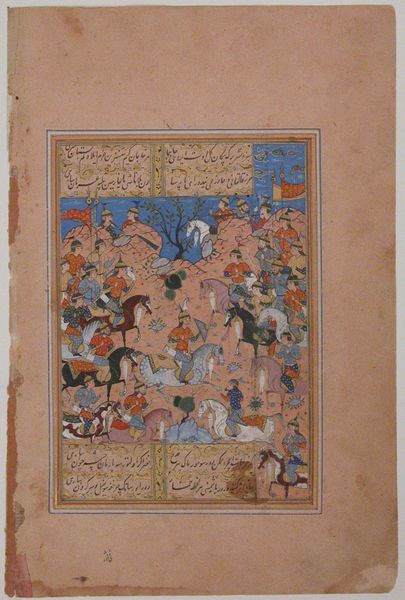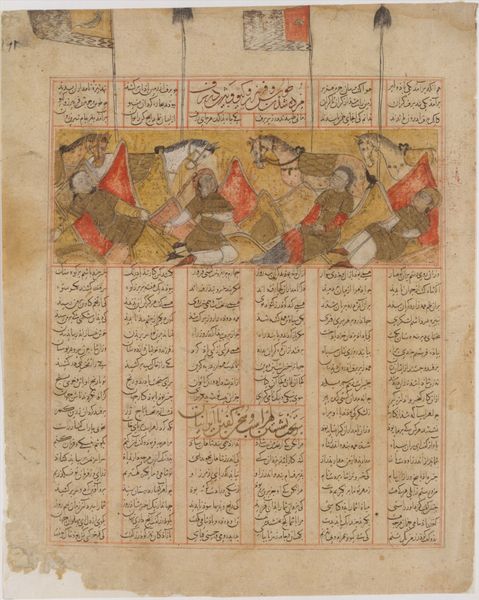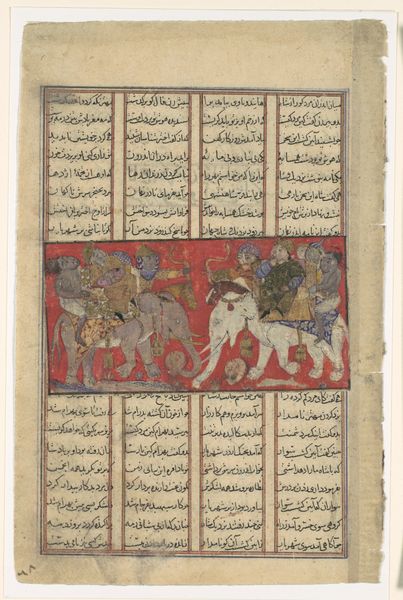
"Iskandar Kills the Habash Monster", Folio from a Shahnama (Book of Kings) of Firdausi 1275 - 1355
0:00
0:00
painting, paper, ink
#
medieval
#
narrative-art
#
painting
#
landscape
#
figuration
#
paper
#
ink
#
horse
#
men
#
islamic-art
#
history-painting
#
miniature
Dimensions: Painting: H. 2 1/8 in. (5.4 cm) W. 4 7/8 in. (12.4 cm) Page: H. 7 1/4 in. (18.4 cm) W. 6 1/8 in. (15.6 cm) Mat: H. 19 1/4 in. (48.9 cm) W. 14 1/4 in. (36.2 cm)
Copyright: Public Domain
This is a folio from a Shahnama, or Book of Kings, created around the turn of the first millennium by Abu'l Qasim Firdausi. Here we see Iskandar, a figure often associated with Alexander the Great, in a heroic act, slaying a Habash monster. But what does it mean to depict a foreign ruler as a hero? This question invites us to consider the intersections of identity, power, and representation within the painting. The figures are rendered with careful detail, their expressions and gestures conveying a sense of drama and movement. Yet, this is more than just an action scene; it’s a cultural statement. The Shahnama is not just a historical text, but also a work of art that reflects the values and beliefs of its time. The decision to include Iskandar as a central figure suggests a willingness to embrace foreign influences and integrate them into a Persian narrative. This panel presents an alternative narrative of cultural exchange. How does seeing a foreign ruler as a hero change our understanding of cultural identity and power?
Comments
No comments
Be the first to comment and join the conversation on the ultimate creative platform.
